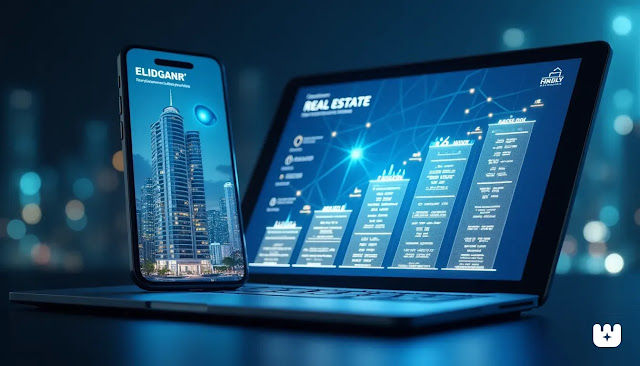Introduction
Real estate has traditionally been a high-cost, illiquid asset, limiting ownership to wealthy individuals and institutional investors. However, fractional real estate ownership is changing the landscape by allowing investors to own a share of a property without purchasing it outright. This model democratizes real estate investment, making it more accessible, flexible, and affordable.
By leveraging technology, blockchain, and crowdfunding, fractional ownership is gaining traction in the residential, commercial, and vacation home markets, offering investors passive income and potential appreciation without the burden of full ownership.
What is Fractional Real Estate Ownership?
Fractional real estate ownership allows multiple investors to own shares in a property, similar to owning stocks in a company. Instead of buying a property outright, individuals purchase fractions or tokens representing a portion of the asset.
How It Works
- A property is acquired – either by an investment firm, a group of buyers, or through a tokenized platform.
- Shares or tokens are issued – investors can purchase fractions of the property.
- Investors earn returns – through rental income, property appreciation, or dividends.
- Resale opportunities – some platforms allow investors to sell their shares for liquidity.
Why is Fractional Ownership Growing in the US?
1. Lower Financial Barriers
- Traditional real estate investments require large down payments and credit approvals.
- Fractional ownership allows investors to enter the market with as little as $500 to $10,000.
2. Increased Liquidity
- Unlike full property ownership, fractional shares can be bought, sold, or traded, providing more flexibility.
- Blockchain-based platforms offer real-time transactions and secondary markets.
3. Passive Income Opportunities
- Investors earn rental income without managing tenants or maintenance.
- Professional property management ensures hassle-free ownership.
4. Portfolio Diversification
- Investors can own fractions of multiple properties across different cities and asset classes (residential, commercial, vacation homes).
- Reduces risk compared to putting all funds into one property.
5. Technological Advancements
- Blockchain enables secure, transparent, and efficient property tokenization.
- Crowdfunding platforms make real estate investing accessible with low entry costs.
Top Platforms for Fractional Real Estate Investment in the US
1. Fundrise
🏡 Best for: Long-term real estate investing with a low entry cost.
Fundrise allows investors to buy shares in diversified real estate portfolios, offering passive income through REITs (Real Estate Investment Trusts).
🔹 Minimum investment: $10
🔹 Investment type: Residential & commercial properties
🔹 Returns: Quarterly dividends & appreciation
2. Arrived Homes
🏠 Best for: Investing in rental properties for passive income.
Arrived Homes specializes in single-family rental properties, allowing investors to earn monthly rental income.
🔹 Minimum investment: $100
🔹 Investment type: Single-family homes
🔹 Returns: Rental income & property appreciation
3. Lofty AI
📊 Best for: Blockchain-based fractional real estate ownership.
Lofty AI tokenizes properties on blockchain networks, allowing investors to buy and sell fractions of real estate instantly.
🔹 Minimum investment: $50
🔹 Investment type: Tokenized real estate
🔹 Returns: Daily rental income payouts
4. RealT
🔗 Best for: Crypto investors looking for tokenized real estate.
RealT offers fractional ownership via Ethereum-based tokens, enabling real-time trading and global access to US real estate.
🔹 Minimum investment: $50
🔹 Investment type: Tokenized rental properties
🔹 Returns: Weekly rental income in cryptocurrency
Challenges of Fractional Real Estate Ownership
🔹 Liquidity limitations – Some platforms have lock-in periods before investors can sell shares.
🔹 Market volatility – Real estate prices fluctuate, affecting potential returns.
🔹 Regulatory uncertainties – SEC regulations may impact fractional ownership structures.
Despite these challenges, fractional ownership is reshaping real estate investing, making it more inclusive, flexible, and tech-driven.
Frequently Asked Questions (FAQs)
1. How does fractional real estate ownership differ from REITs?
- Fractional ownership gives direct shares in specific properties.
- REITs are funds that invest in multiple properties but don’t grant direct ownership.
2. Can I sell my fractional property share anytime?
Some platforms offer secondary markets for selling shares, while others have holding periods.
3. Do I need to manage the property if I own a fraction?
No, professional property management handles maintenance, tenants, and rent collection.
4. How are earnings distributed?
Investors earn rental income (monthly/quarterly) and potential property appreciation.
5. Is fractional real estate ownership safe?
Yes, but it’s important to choose regulated platforms and understand the investment risks.
#FractionalRealEstate #PropertyInvestment #RealEstateTech #PassiveIncome #WealthBuilding #BlockchainRealEstate #SmartInvesting

